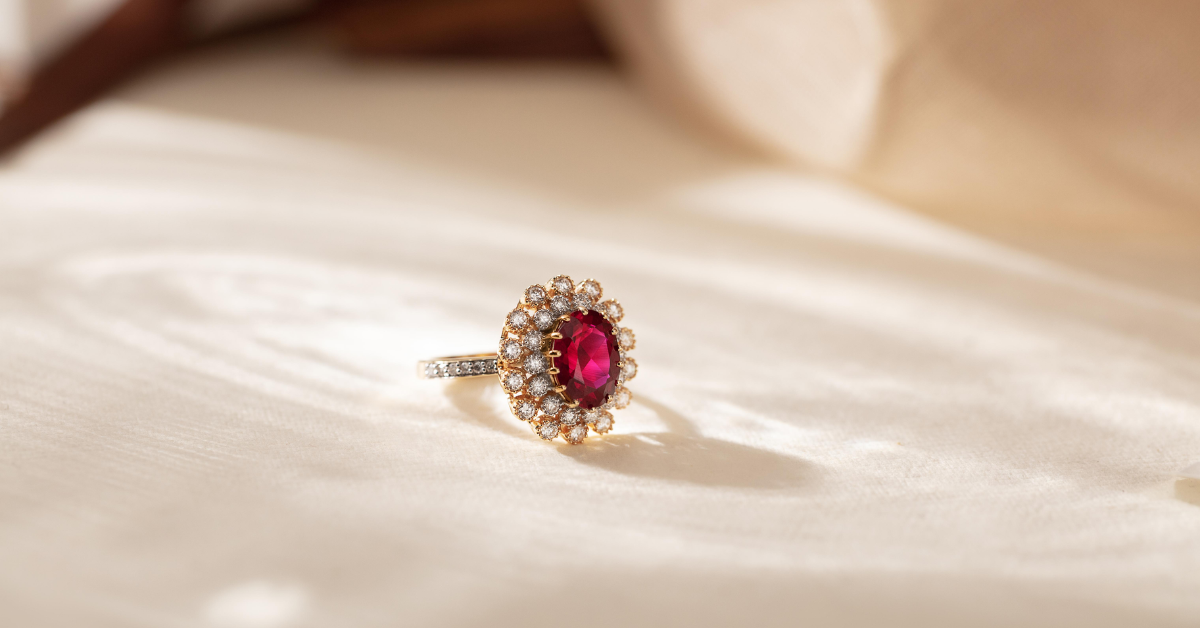Thinking of buying or valuing a ruby but overwhelmed by all the pricing variables? You’re not alone. Ruby pricing can feel mysterious—but it doesn’t have to be. This guide breaks down exactly what determines the price of rubies so you can shop smarter, ask better questions, and avoid overpaying.
Whether you're a gem collector, jewelry shopper, or reseller, understanding the true value behind ruby pricing is key.
What Really Determines the Price of Rubies?
The value of rubies is shaped by five main factors:
-
Color
-
Country of origin
-
Treatment
-
Clarity
-
Size (carat weight)
Let’s dive into each.
Colour: The #1 Factor in Ruby Pricing
What Color Is the Most Expensive Ruby?
The most valuable rubies are vivid, medium to dark red with a hint of blue—often called “pigeon’s blood” rubies. These command the highest prices due to their rarity and visual appeal.
What Other Colors Exist?
-
Pinkish-red: Can be beautiful but usually priced lower.
-
Brownish or orangey-red: Considered less valuable.
-
Too light: May be classified as pink sapphires instead of rubies.
Pro Tip: Color intensity should be rich but not too dark. Overly dark rubies can look black and lose value.
Country of Origin: Where Your Ruby Comes From Matters
Most Valuable Origins
-
Burma (Myanmar): Home of the most prized rubies, especially those with pigeon's blood color.
-
Mozambique: A newer source producing vibrant rubies at more accessible price points.
Less Valuable Origins
-
Thailand & Cambodia: Produce darker rubies with less brilliance.
-
Vietnam & Afghanistan: Quality varies; stones can have more inclusions.
Why It Matters: Rubies from prestigious origins like Burma often hold and increase their value better over time.
Treatment: Natural vs Treated Rubies
What Treatments Are Common?
-
Heat Treatment: Enhances color and clarity. Widely accepted and priced fairly.
-
Lead Glass-Filling: Improves appearance but drastically lowers value. These rubies are fragile and less durable.
How to Care for Treated Rubies
-
Don’t expose to harsh chemicals or ultrasonic cleaners.
-
Wipe gently with a soft cloth and store separately.
Always ask for a lab report to verify treatment status, especially when buying high-value rubies.
Clarity: What’s Inside Your Ruby?
Rubies naturally contain inclusions, but fewer visible inclusions = higher value.
How to Evaluate Clarity
-
Eye-clean rubies (no visible inclusions without magnification) are more expensive.
-
Inclusions that reduce brilliance or durability can drop the price significantly.
-
Silk inclusions can actually add value in untreated rubies by diffusing light attractively.
Size: How Carat Weight Influences Price
Ruby pricing doesn’t increase linearly with size—it skyrockets.
-
A 2-carat ruby of high quality is worth far more than double a 1-carat ruby of similar quality.
-
High-quality rubies over 3 carats are rare and expensive.
Check price per carat, especially when comparing similar stones.
Conclusion: What Makes a Ruby Valuable?
Rubies aren’t just priced based on looks—they’re valued based on a blend of color, origin, treatment, clarity, and size. Now that you know how ruby pricing works, you’re better equipped to shop confidently and avoid costly mistakes.
Whether you’re buying ruby jewelry or investing in loose stones, knowledge is your strongest asset.
FAQs About Ruby Pricing
What makes rubies so expensive?
Their rarity—especially fine, untreated rubies with deep red color—and historical prestige make them one of the most valuable colored gemstones.
How can I tell if a ruby is real or synthetic?
Check for certification (GIA, AGL, or IGI). Natural rubies often have minor inclusions, while lab-made stones are usually flawless.
Are treated rubies worth less?
Yes. Heat-treated rubies are still valuable, but fracture-filled rubies (especially with glass) are worth much less.
What is the best country to buy rubies from?
Burma (Myanmar) is top-tier for collector value. Mozambique is also respected for high-quality rubies with better pricing.
Can rubies be a good investment?
Absolutely—untreated, high-quality rubies, especially from Burma, have shown strong long-term appreciation in value.
